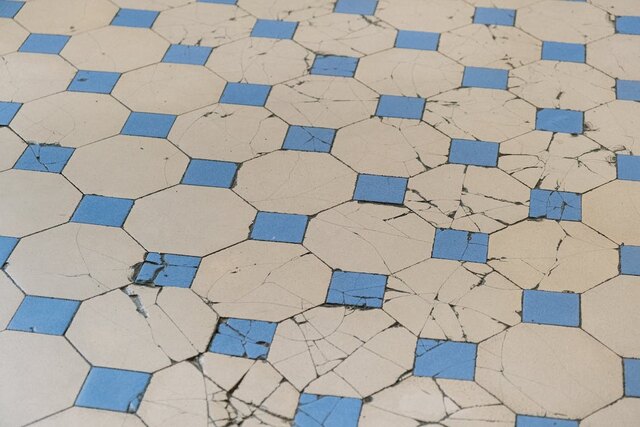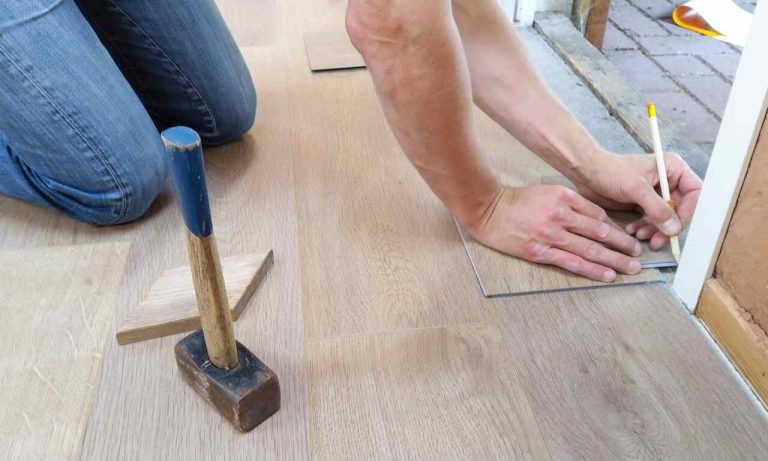When it comes to maintaining a well-kept home, the condition of your flooring plays a key role. However, flooring, like any other home component, is susceptible to a variety of issues that can hinder aesthetics and functionality. Frequently encountered problems range from simple wear and tear, manifested through scuff marks, scratches, and dents, to more complex issues such as water damage, subfloor issues, and buckling. For instance, hardwood floors, despite their durability and appealing look, are prone to scratches and water damage. On the other hand, tile floors can suffer from cracked or loose tiles, and carpets can be plagued by stains or worn-out padding. Understanding these common flooring issues is the first step towards effective problem-solving and keeping your floors in pristine condition.
1. Hire Professionals
The most efficient way to tackle flooring issues is by hiring professionals. Trained technicians possess the necessary knowledge, tools, and skills to diagnose and address a wide range of flooring problems. They can ensure that the work is done correctly and efficiently, saving you both time and potential additional damage. Of course, whether you are considering hiring the services of concrete repairs in Brisbane or carpet cleaning in New York, always make sure to do your research and hire reputable professionals with positive customer reviews. When it comes to your home, you want to make sure the job is done right the first time. Now, finding professionals that fit your needs and budget is important but as a homeowner, there are some quick fixes you can implement yourself to address common flooring issues. The best starting point is to ensure that you have the right tools, materials, and knowledge at hand.
2. Regular Cleaning
Regular and proper cleaning can help maintain the integrity of your floors. For hardwood, use products specifically designed for wood cleaning. For tiles, a soft, damp mop can effectively clean them without causing damage. Carpeted floors require frequent vacuuming and occasional deep cleaning to keep them fresh and prolong their lifespan. Additionally, cleaning up spills and stains promptly can prevent them from becoming permanent. Hey, even things like baseboards need cleaning from time to time, do not forget that! For more stubborn stains, there are plenty of DIY solutions that can save you time and money. Furthermore, using area rugs and furniture pads can also help protect your floors from damage. Hiring professional cleaners is also a viable option but it does come at a cost. On average, you would have to set aside $120 to $230 for professional carpet cleaning. It is worth the investment, however, as it can prolong your carpet’s lifespan and improve air quality in your home.
3. Immediate Stain Removal
In the case of carpets, immediate stain removal is crucial. Blot the stain rather than rub it to avoid spreading or deepening it. Use a manufacturer-recommended cleaning solution for best results. If the stain persists, consider using a homemade solution such as a mixture of water and vinegar or dish soap. For tile floors, a mixture of baking soda and water can effectively remove tough stains. Always remember to test any cleaning solution in an inconspicuous area first to avoid damaging your floors further. We all know how persistent stains can be, but with the right tools and techniques, they don’t have to be a permanent eyesore on your floors. Moreover, regular cleaning can prevent dirt and debris from building up and causing scratches or discoloration. By addressing stains as soon as they occur, you can keep your floors looking pristine for longer periods of time.
4. Scratch Repair
For small scratches on hardwood floors, a touch-up kit can be a handy solution. Deeper scratches or gouges might require sanding and refinishing. For tile floors, filling cracks with matching grout and sealing can help prevent further damage. In the case of carpets, small burns or tears can easily be fixed using a patch kit. For larger damages, it is best to consult with a professional for proper repair. Additionally, using furniture pads underneath heavy objects can prevent scratching and indentations on your floors. Furthermore, regularly trimming your pet’s nails and keeping them away from your floors can also help prevent scratches. If you have a busy household, it’s best to opt for more durable flooring options such as vinyl or laminate, which are less susceptible to scratches and damage.
5. Replace Damaged Tiles
Cracked or broken tiles should be replaced promptly to prevent subsequent damage to surrounding tiles. Follow manufacturer instructions or hire a professional to ensure a precise fit and finish. Loose or hollow-sounding tiles should also be addressed to avoid further damage. In some cases, regrouting can fix the issue, but in others, a complete tile replacement may be necessary. It’s also important to address water damage immediately as it can lead to mold and mildew growth and cause structural issues. If you notice any signs of water damage such as discoloration or warping, it’s best to consult with a professional for proper repair and prevention of future damage. Damaged tiles can easily be overlooked, but with proper care and timely repairs, you can maintain the beauty and functionality of your tile floors.

6. Attend to Water Damage Immediately
Water damage can lead to serious flooring issues such as buckling or warping, especially in hardwood and laminate flooring. Make sure to wipe up any spills immediately, and consider using a dehumidifier in damp areas. If water damage has already occurred, professional intervention might be necessary. In severe cases, the affected area may need to be replaced entirely. Timely attention to water damage is crucial in preventing further damage and costly repairs. Furthermore, proper maintenance and regular inspections can help identify potential water damage issues before they become major problems. Water damage is probably one of the worst nightmares for any homeowner, but with proper care and maintenance, you can protect your floors from this common issue.
Understanding common flooring issues and knowing how to properly address them can save you time, money, and frustration in the long run. While hiring professionals is always recommended for more complex issues, there are simple steps you can take as a homeowner to maintain your floors in top condition. Regular cleaning, immediate stain removal, scratch repair, and prompt attention to water damage are all crucial in preserving the beauty and functionality of your floors. With these tips at hand, you can ensure that your flooring remains a strong foundation for a well-kept home for years to come.

